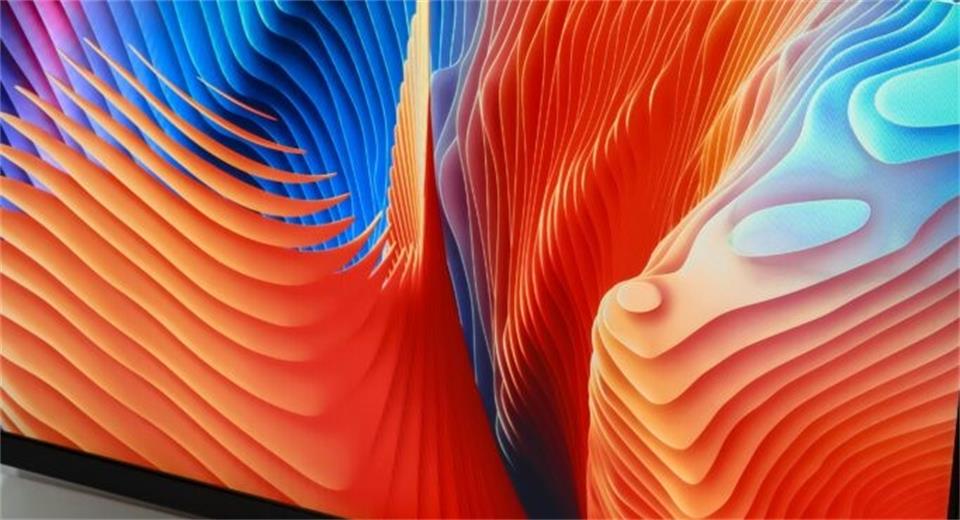FHD vs LED: What Are the Differences?
Recommended reading
Why Are More Control Rooms Switching to COB Fine Pitch LED Displays?
Recommended reading+86 755-33691736inquiry@dicolorled.comNo.13 Huiye Road ,Tangjia Community,Fenghuang Street, Guangming District, Shenzhen,China 518103 Shenzhen Dicolor Intelligent Technology(Dongguang) Co., Ltd Gate No.4-5, Building A-17,...
2025 LED Display Industry Trends: What’s Next for the Future of Displays?
Recommended reading+86 755-33691736inquiry@dicolorled.comNo.13 Huiye Road ,Tangjia Community,Fenghuang Street, Guangming District, Shenzhen,China 518103 Shenzhen Dicolor Intelligent Technology(Dongguang) Co., Ltd Gate No.4-5, Building A-17,...
How to Maximize Brand Exposure with Outdoor LED Advertising? MP Series Case Study in Urban Business Districts
Recommended reading+86 755-33691736inquiry@dicolorled.comNo.13 Huiye Road ,Tangjia Community,Fenghuang Street, Guangming District, Shenzhen,China 518103 Shenzhen Dicolor Intelligent Technology(Dongguang) Co., Ltd Gate No.4-5, Building A-17,...
System Requirements for XR and VP Virtual Production
Recommended reading+86 755-33691736inquiry@dicolorled.comNo.13 Huiye Road ,Tangjia Community,Fenghuang Street, Guangming District, Shenzhen,China 518103 Shenzhen Dicolor Intelligent Technology(Dongguang) Co., Ltd Gate No.4-5, Building A-17,...
Customer Service
+86 755-33691736
inquiry@dicolorled.com
Headquarters Address
No.13 Huiye Road ,Tangjia Community,Fenghuang Street, Guangming District, Shenzhen,China 518103
Shenzhen Dicolor Intelligent Technology(Dongguang) Co., Ltd Gate No.4-5, Building A-17, No.780 Xiecao Road , Xiegang Town, Dongguan, Guangdong, China
The world of entertainment, devices, and screens are in a constant state of upgradation. Because of gaming, movies, and TV shows, the two most popular screens that the consumers love are Full High Definition and Light Emitting Diode. You may have used the terms FHD and LED in a conversation. Here are their definitions and differences.
What is FHD?
FHD means Full High Definition. The screen has a specific type of viewing quality which stays uniform in TVs, monitors, and smartphones. The resolution for FHD is 1920 x 1080 pixels throughout the display. A screen that has been manufactured with FHD elements has 1920 pixels horizontally and 1080 pixels vertically. As a result, the formation forms a grid to create images on the screen.
An FHD screen has an aspect ratio of 16:9. The pictures are quite detailed. You can admire the animations with each passing frame. Videos playing on an FHD screen are very immersive as well. An FHD screen is available in many sizes for office use. However, FHD displays are also excellent for playing games, advertising, and watching movies.
An FHD screen is found in different applications because it does not strain the eyes. You can read texts, browse social media, and read articles on computer screens without worrying about your eyes. An FHD screen will not compromise your visual sense. If your game requires a customized character or the console has complicated movements, you can install an FHD screen to experience a detailed environment. The lighting is quite realistic as well.
What is LED?
LED screens make use light light-emitting diode technology. An LED has many applications in addition to screens. The screen outputs a light as soon as current passes through it. Surprisingly, the current does not damage the screen or has other disadvantages associated with it. An LED screen is very energy-efficient even when it is emitting vibrant colors and brightness.
LED technology allows for thinner screens with more energy-efficient properties. The screens are available in different sizes and shapes. You can purchase them according to resolutions and pixel pitches. The manufacturers offer cabinet materials to protect the screen while it is being shipped or delivered. Here are its types
OLED
Organic Light Emitted Diode technology is extremely rich in colors and high in contrast. The type of LED has a wide viewing angle with a fast response time. It does not use silicon or gallium. OLED screens are commonly found in watches, VR headsets, and AR accessories. Compared to LED, OLEDs are made up of organic carbon-emitting layers.
QLED
Quantum dot LED is another type of prevailing LED technology. It uses radiant crystals to enhance the backlight technology. QLED was introduced in televisions and entertainment screens in 2017. The QLED technology is excellent for their top-quality viewing experience. Unfortunately, QLED offers an unfriendly viewing angle. The screens are heavier, not as thin, and need more power than OLED screens.
FHD vs LED Screen: The Key Differences
FHD and LED have different aspects of display technology. Here’s a breakdown to help clarify their characteristics of screens:
1. Brightness
The difference between FHD and LED is brightness. However, FHD and LED screens that have higher brightness are very costly to manufacture. However, an LED display is more expensive to manufacture if it has advanced features. The installation of LEDs, built-in cooling systems, and protective coatings also attract different customers. You can admire FHD and LED screens in numerous appliances today.
2. Screen Size
If an FHD and LED screens are larger, they become more expensive. Other factors that influence the size are LED modules, control systems, and reliable cabinet materials. An estimated cost of 32 inch LED or FHD screen is between $300 to $900. On the other end, an 86-inch screen is priced between $2000 and $4,000. Even the cheapest material costs $500.
3. Resolution
The FHD vs LED argument is incomplete without talking about the resolution. An FHD screen has a resolution of 1920 x 1080 pixels. On the other hand, the LED screen varies. The resolution of the LED screen depends on the device you are using. Remember that all FHD screens cannot incorporate LED technology, so a difference in resolution is visible.
4. Color Accuracy
Color accuracy means the way the FHD and LED screen deliver colors on the screen. LED screens have a far better color accuracy and display output. The best FHD screens will struggle to display colors that an LED displays every day. This is because an LED displays each color one time and blends into a larger screen.
5. Energy Efficient
Another difference between FHD and LED is energy efficiency. The LED screens consume less energy compared to costs than other screens. The backlighting limits power consumption significantly. Therefore, you can now make a conscious decision about which screen to use for sustainable living. FHD screens are not as energy efficient because they require more power to offer the same brightness and color quality as LED screens.
6. Cost
The cost difference between FHD and LED screens is reducing and here is why. Since FHD screens are becoming the new normal, investing in research and development has made them more affordable. In other words, they are less expensive than other high-end options. In contrast, the cost of an LED screen depends on the device, brand, and use. If the cost is high, you can rent LED display screens.
7. Lifespan
Are you curious about which screen lasts longer? LED screens have a significant advantage over FHD screens because of their longer lifetime. It is one of the reasons LED screens are popularly installed in devices. You can use an LED screen a hundred thousand times more than an FHD screen before you start complaining of degrading display or compromised picture quality.
8. Contrast Ratios
Undoubtedly, the FHD screens offer an excellent quality display output. On the other hand, LED screens have a better contrast ratio. As a result, the colors are brighter and engaging. The darker hues have depth, and the whites are brighter on an LED screen. However, the difference in contrast ratio depends on the panels installed underneath the screen. If the panel is low quality, the output is compromised regardless of the screen.
9. Response Time
The FHD vs LED argument closes by talking about response time. LED screens have an excellent response time. They turn on and off immediately. Moreover, LED screens display transitions a lot better. They are the preferred screens in sports events, fight scenes, and high-resolution videos than FHD screens.
Comparison of FHD and LED for Different Applications
It’s essential to understand that FHD refers to a resolution, while LED pertains to a type of backlight or display technology. Thus, they address different aspects of a screen’s performance.
1. Gaming
When it comes to gaming, an FHD monitor of 27-inch is an excellent beginning point. The screen has the ideal balance in delivering gameplay. It displays detail in every frame. You can enjoy the clear visuals, making it an excellent choice among avid gamers. An LED screen of 55 inches is ideal for gaming, on the other hand. The backlight technology offers consistent illumination throughout the screen. It leads to a uniform viewing experience for your favorite in-game characters as well.
2. Professional Work
You must stay away from FHD screens if you intend to use them professionally. The high resolution is a huge issue because of scaling. An FHD screen is incompatible with external monitors. However, an LED screen is your best friend. The screens are versatile. They offer high-quality displays, whether on phones, tablets, and computers. Furthermore, you can customize the LED screens for indoor and outdoor use to promote services.
3. General Entertainment
LED screens are used throughout the entertainment industry. You will notice them at concerts, sports events, and even corporate retreats. LED screens are the go-to choice for general entertainment, which will not disturb the budget. FHD screens are appropriate for a grand-scale viewing. Usually, they are installed at airports, bus stations, and train stations for crisp viewing. The lagging response time makes FHD a subpar choice for entertainment.
Conclusion
Unfortunately, there is no clear answer because the differences in FHD and LED screens overlap. Both screens are used in television and monitors. Before purchasing, you can factor in the space and the reasons for the display. Don’t forget to think of the budget.
A smaller screen will benefit from an FHD screen because the audience is closer to the pixels. In contrast, LED screens offer flexibility. They have been a huge part of the industry for more than a decade and yield high customer satisfaction.
Dicolor is a global provider of LED displays. We show premium technology with cutting-edge technology and advanced innovations, providing LED display products, solutions,and services worldwide for rental stage events, ads billboards, commercial display, etc.


